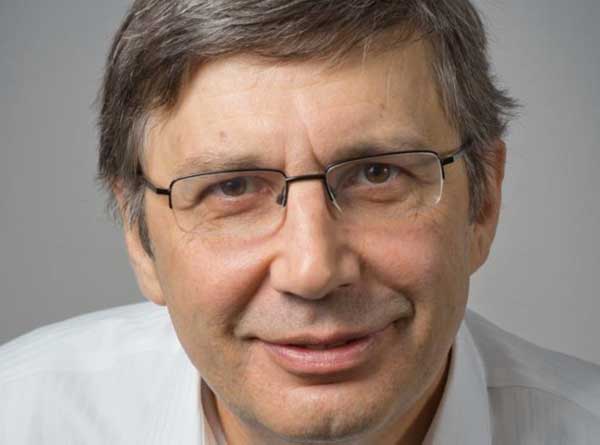
Professor Sir Andre Geim is repeatedly named among the world’s most active scientists by Thomson-Reuters. He is continually making an impact with ground breaking research.
He is the only person ever to have been awarded both the Ig Nobel and Nobel prizes (both for physics). He rarely gives interviews so this was a treat.
Here are some highlights from his conversation with me and members of the audience…
Why do you think graphene has gained so much prominence?
It is a material of surprises and superlatives. As well as being the thinnest, strongest, most highly electrically and thermally conductive material ever discovered, we can also add it is the quickest to market. We first started to see graphene in sports equipment such as tennis racquets & skis, although many thought it was mostly a sales gimmick. Now we are seeing more realistic applications as graphene is being added to improve mobile phones, batteries, paints and car components.
What is your view of the landscape of this whole field of research?
Graphene is only one of a whole new family of two dimensional (2D) materials. We know of over a thousand more. The exploration of these has only just begun. An example of these materials would be boron nitride (hBN) which is similar to graphene but instead of carbon it is made of alternating boron and nitrogen atoms. Molybdenum disulphide (MoS2) is another of these 2D crystals and has a range of properties that make it a promising candidate for future electronics.
As well as understanding the properties of these new materials we have learnt how to combine them in layered stacks called van der Waals heterostructures. The number of potential combinations is practically endless. The 2D materials and their heterostructures will keep us in work for decades to come.

Adrian Nixon in conversation with Andre Geim at the National Graphene Institute
(Image courtesy of the University of Manchester)
You mentioned graphene is a wonder material, can you tell us more?
To everyone’s surprise, graphene continues to reincarnate itself every couple of years. The most recent example is bilayer graphene where layers are rotated slightly (about 1 degree) relatively to the other. This rotation makes graphene superconducting when cooled down to 2 Kelvin. This came as a genuine surprise, no one expected or predicted this. People are still working to understand the mechanism involved. The research has the name twistronics, an emerging field that explores effects of aligning atomic layers within van der Waals heterostructures at different angles. This is going to keep scientists occupied for many years.
Are you working on other aspects of 2D materials?
Let me give you the latest example of Manchester research developed over the last 3 years. When an atomic layer such as graphene is removed from its bulk crystal, people focused on the material that had been isolated, graphene or another 2D crystal. We changed the perspective asking ourselves what properties would be of what is left behind. It is an empty space of only a few angstroms in height.
These 2D voids can be used as, for example, nanocapillaries and exhibit quite unusual properties as we found. They allow some molecules, like water, to pass through. Other, larger, molecules and ions cannot. This mimics the basic elements of life, protein channels such as aquaporins. Using the 2D empty space we can now explore the behaviour of gases and liquids under the true atomic-scale confinement, which is important for many things in science including our understanding of the complexities and functioning of life.
Amazing, thank you Andre. You have given us an insight into Nobel prizewinning thinking. Long may you continue to explore and fascinate us with what you find.


© Copyright 2025 Nixene Publishing Privacy Policy Cookie Policy Website Design by Pivotal Marketing